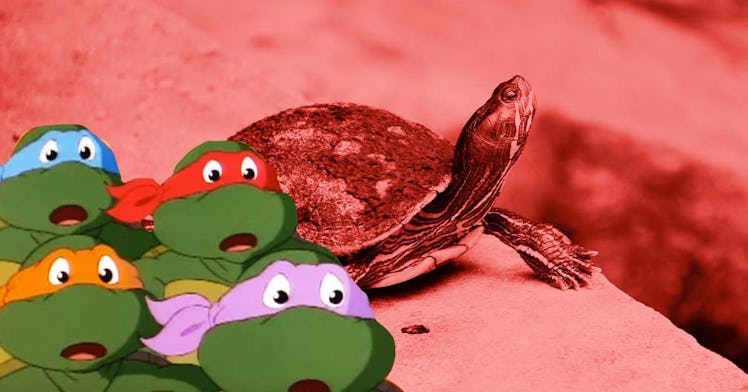Teenage Mutant Ninja Turtles Popularity Screwed-Over Real Turtles in the 90s
What is the opposite of turtle power?

The Teenage Mutant Ninja Turtles became one of the biggest pop culture phenomenons of the 1980s, as the independent comic book series ended up spawning an animated TV show, several live-action movies, and, of course, a shitload of merchandise. The massive success of the franchise also inspired kids across the globe to start adopting turtles as pets.
The number of turtle exports in the United States jumped from 3.5 million annually to over 9 million following the release of the first TMNT film. Sadly, the massive uptick in turtle adoption during this time ended up having a severely negative ecological impact which is still being felt today.
How exactly did kids adopting turtles hurt the larger ecosystem? Well, according to Inverse, the red-eared slider was the turtle that was mostly being adopted during this era, as it was easy to breed and relatively inexpensive.
But red-eared sliders can live for several decades and while an eight-year-old may be excited to get a turtle they can name Donatello or Leonardo, after a few years, many of these kids had outgrown their love for the pizza-loving ninja turtles and grown bored of their pet red-eared slider. As a result, families began setting their pet turtles free in the nearest body of water. And that is when the trouble really began.
Anytime a creature enters a new environment, it is guaranteed to have an impact. And in the case of red-eared sliders, that meant bringing new diseases and because they are omnivores, becoming predators to other species. But the most significant problem was the effect the presence of red-eared sliders had on other turtles, as red-eared sliders are larger and populate at a faster rate than most other types of turtles.
As a result, they are able to dominate the other turtles in their environment and rob them of necessary resources, including food and nesting spaces. Red-eared sliders were even designated as threats to native turtles in several parts of the world, including Australia, South Africa, and the European Union, all of which have officially banned them.
Given how widespread this issue has become over the past three decades, there’s no clear or immediate solution. But on an individual level, if you do end up adopting a red-eared slider and find yourself unable to handle it, do not set it free into a lake or pond nearby. You won’t be doing the turtle or the environment at large any favors.
This article was originally published on